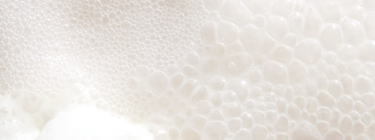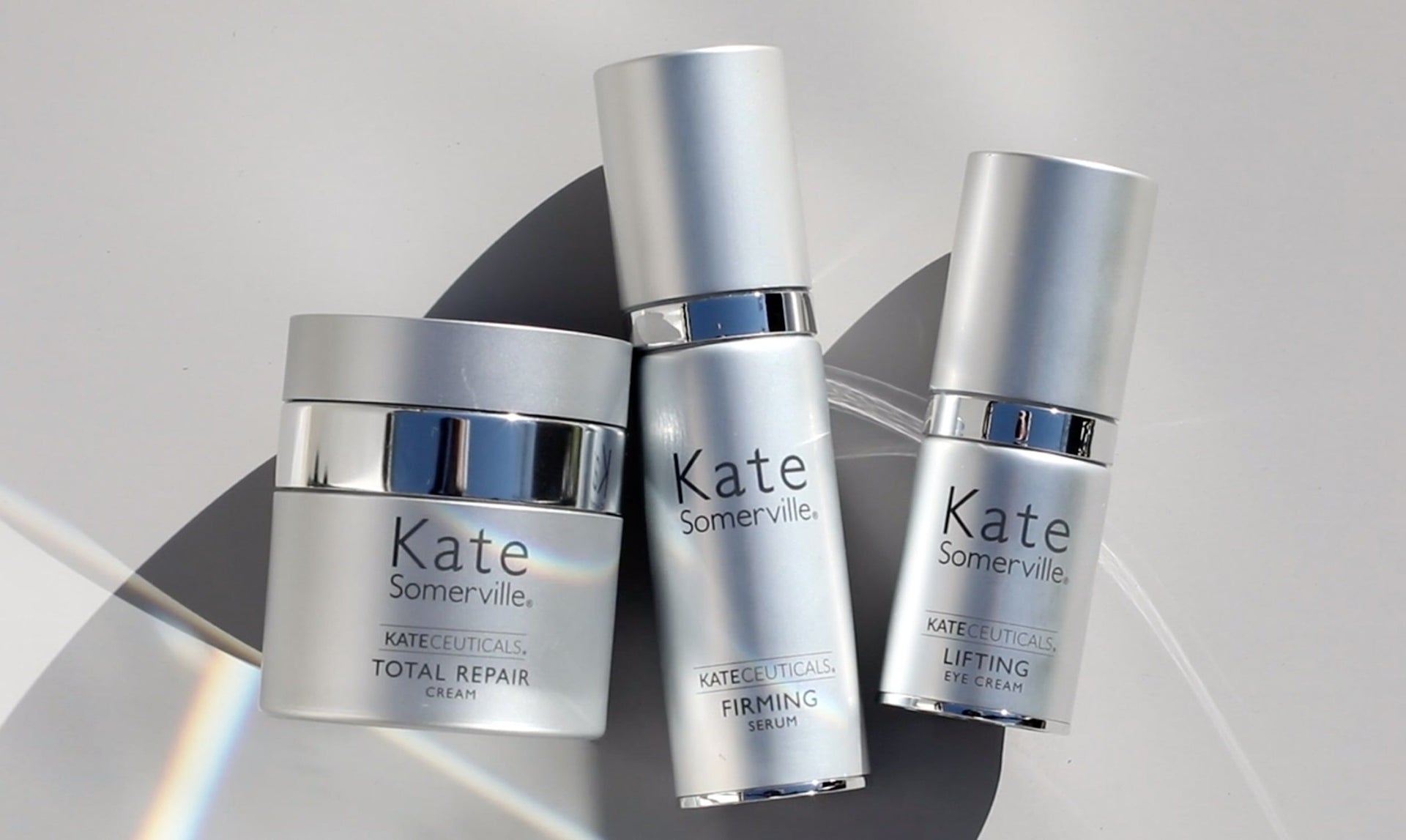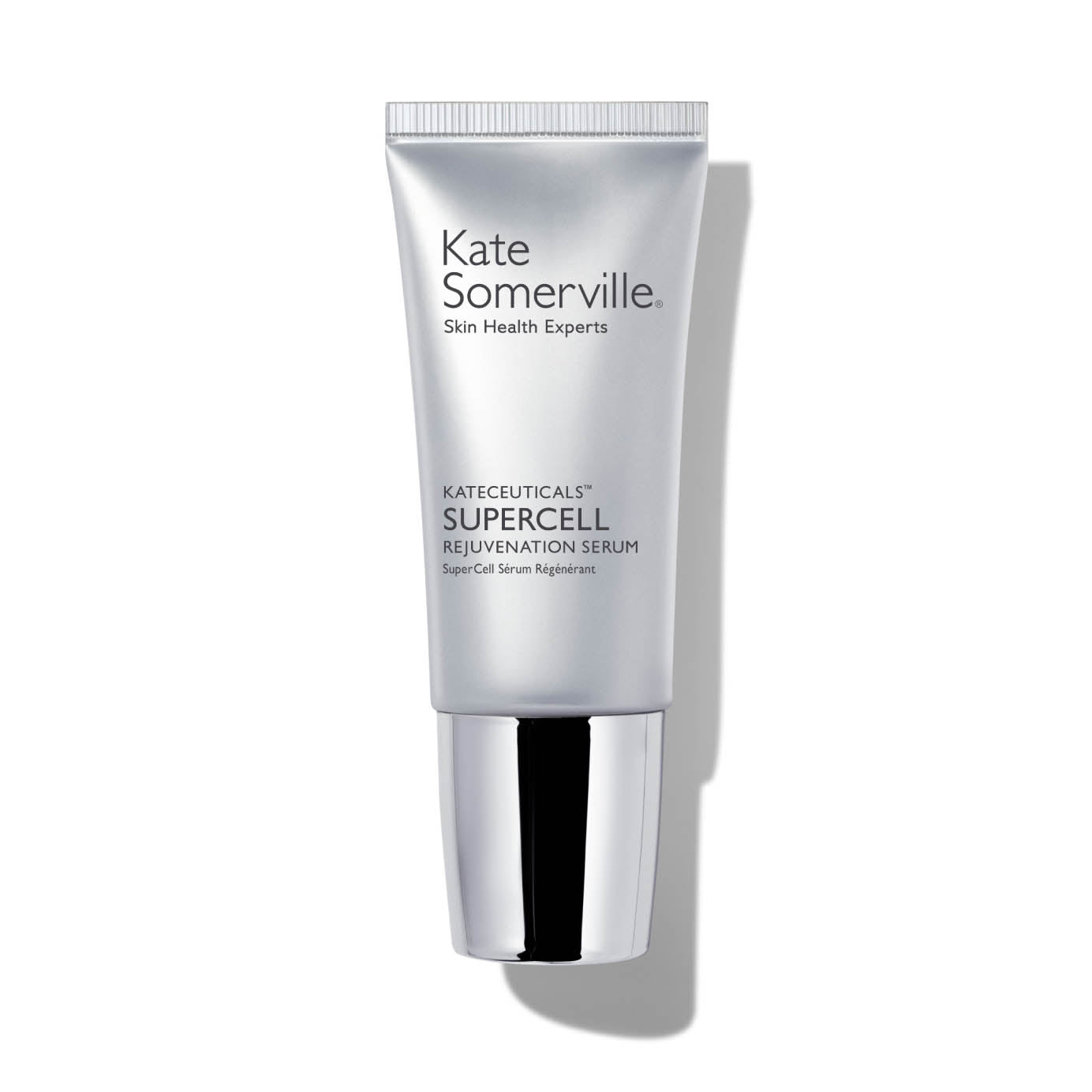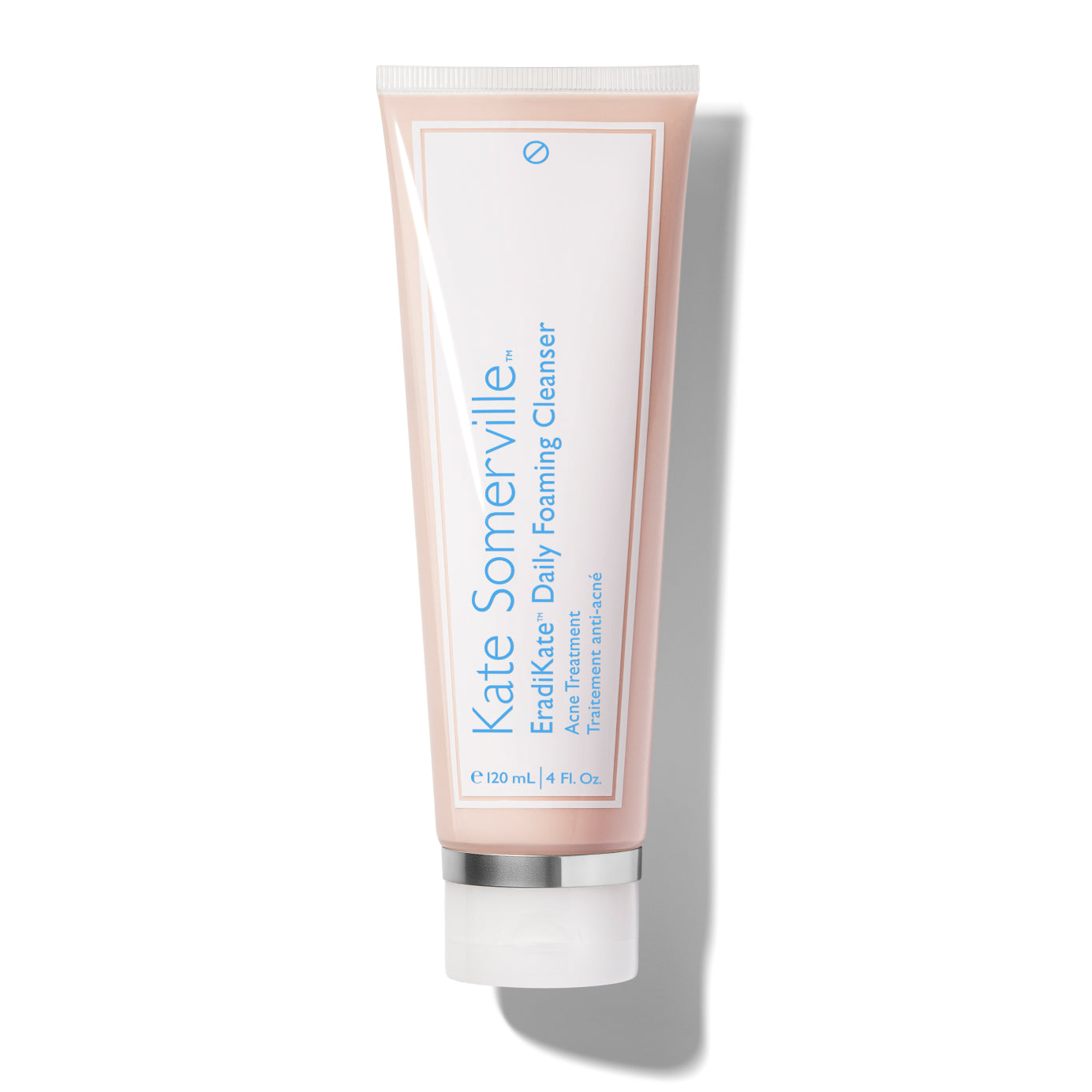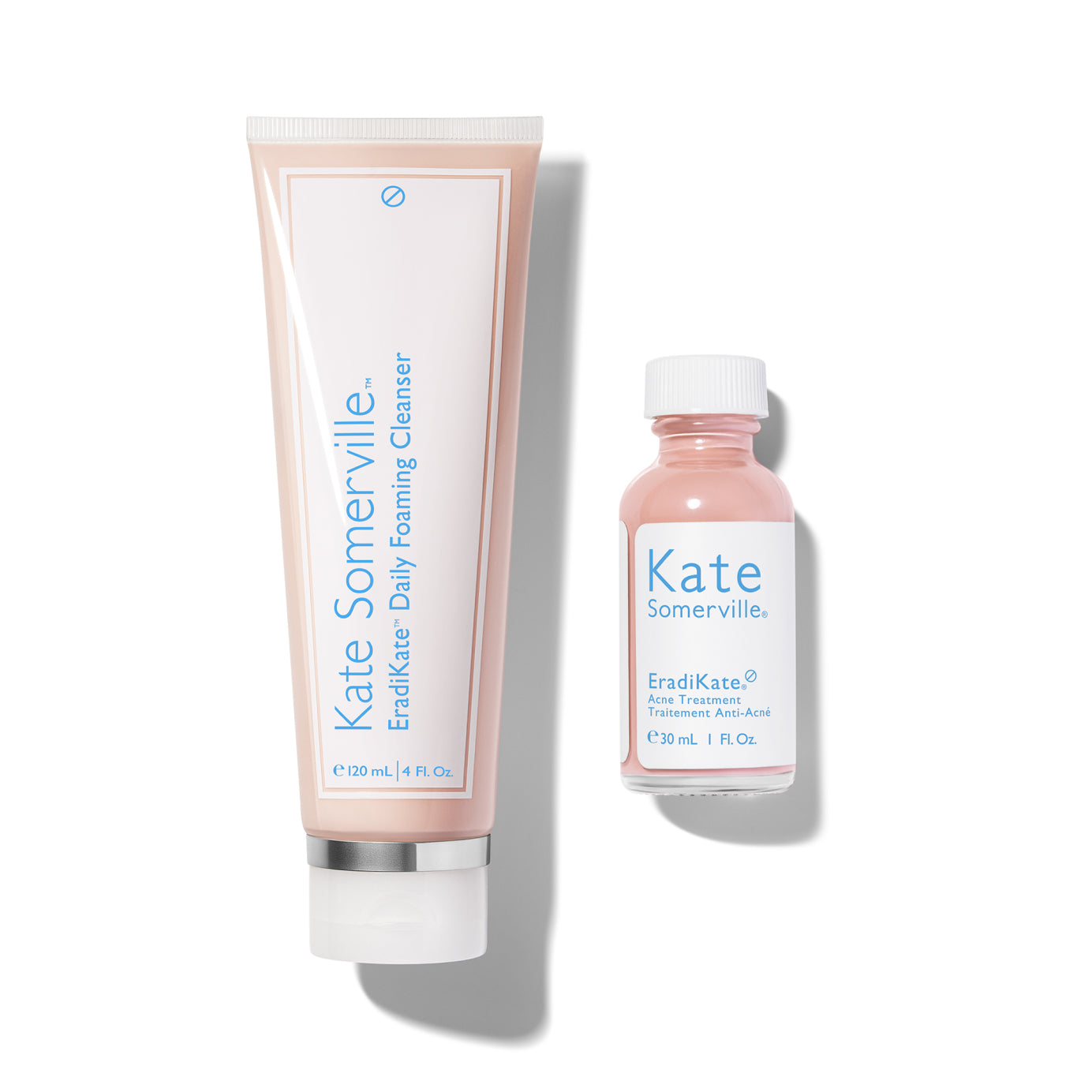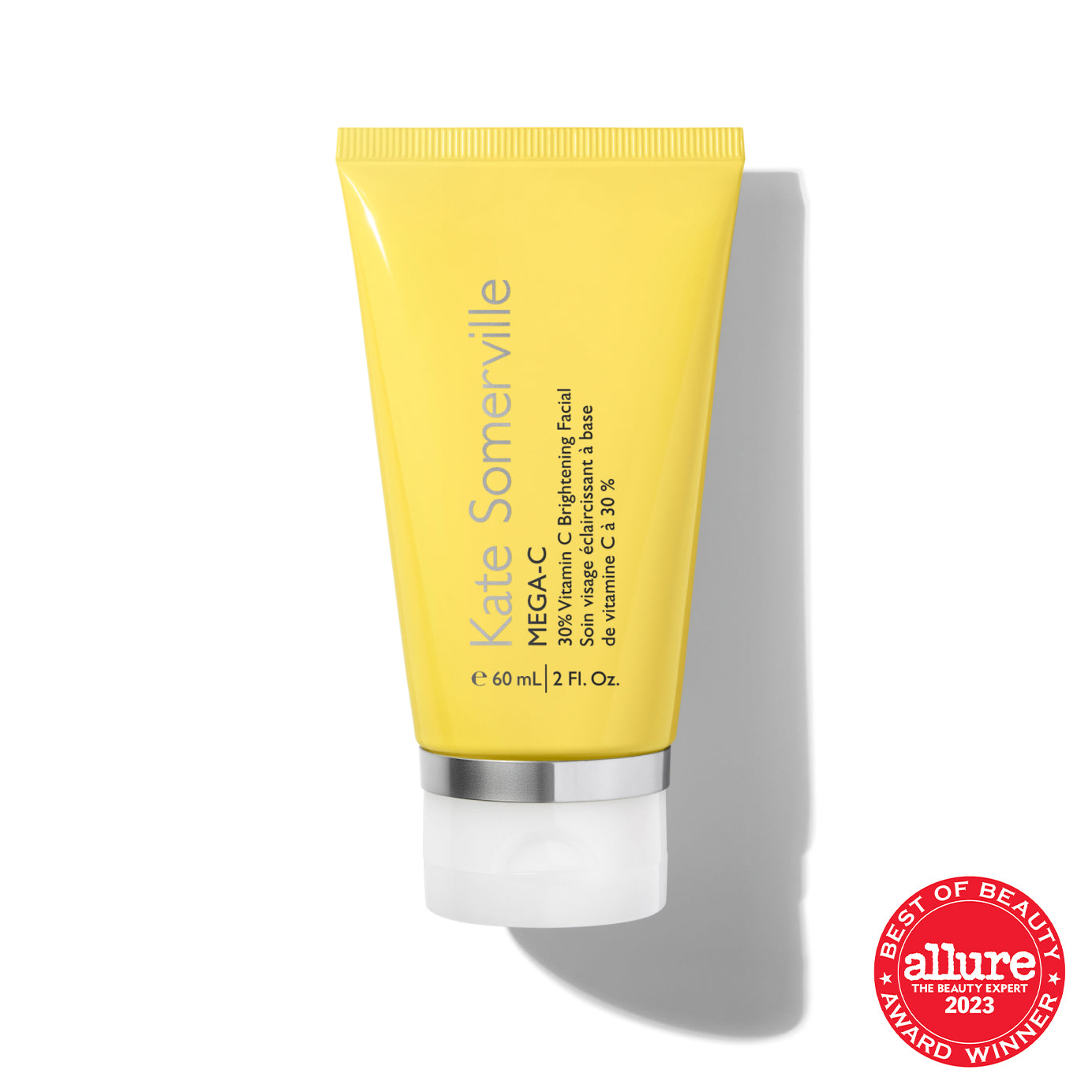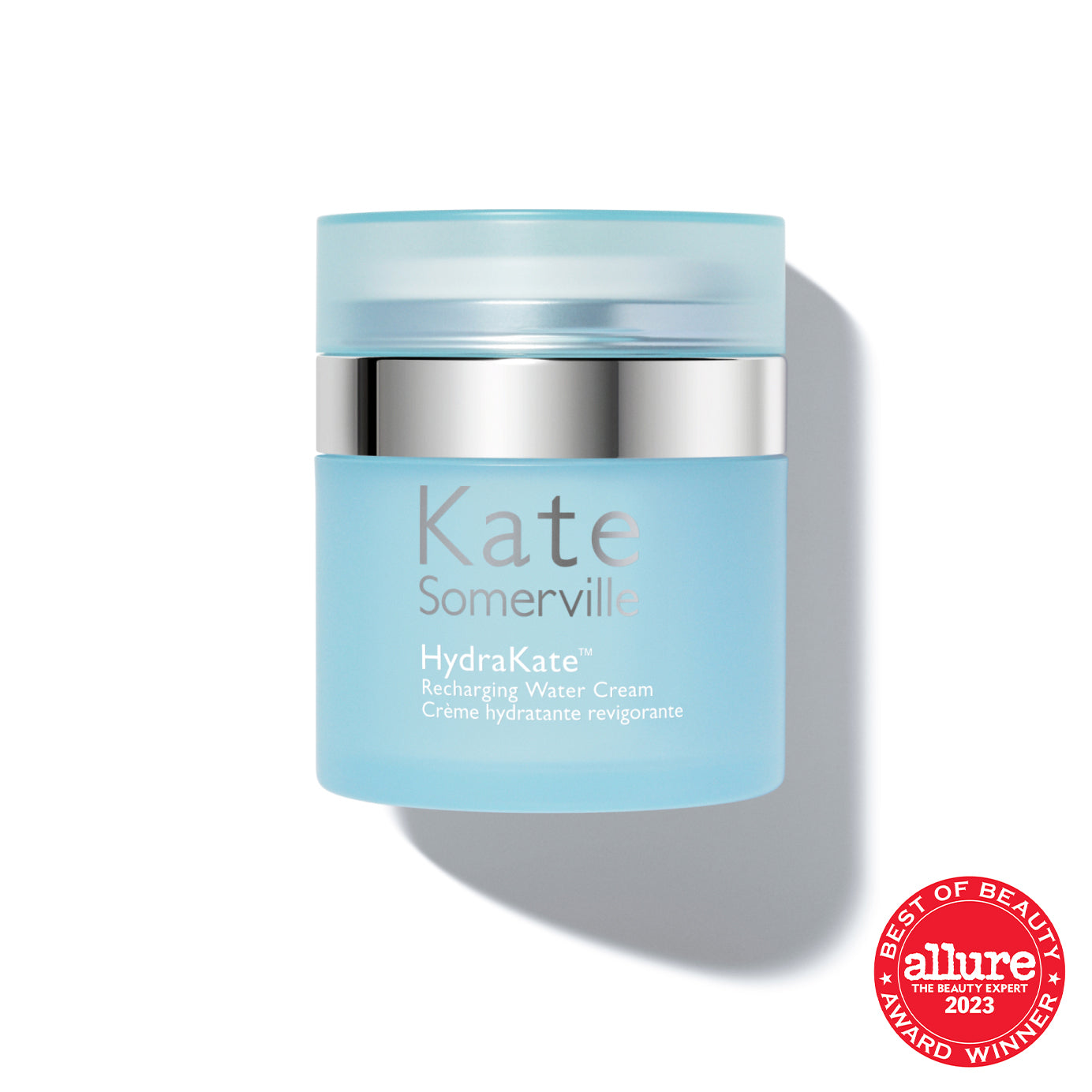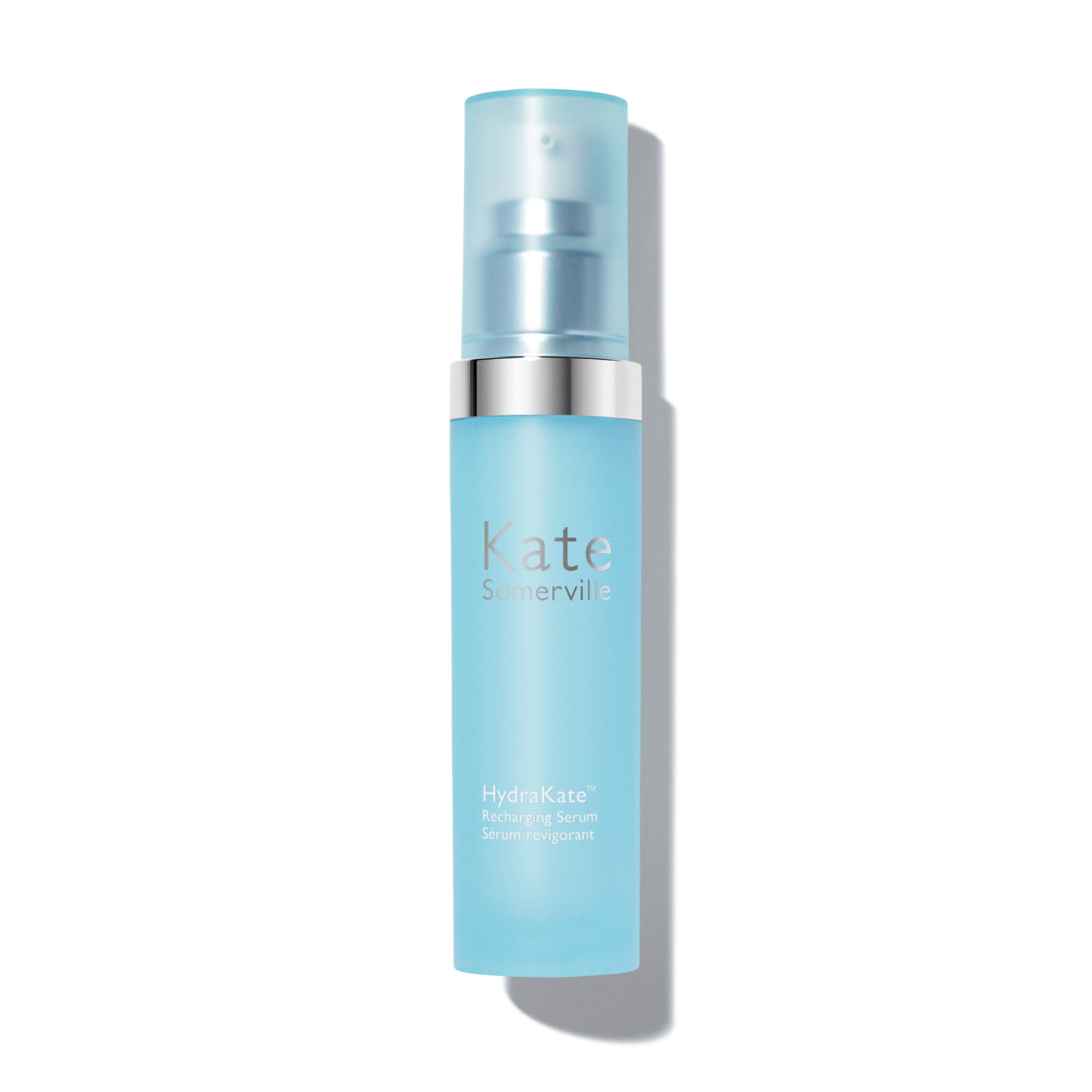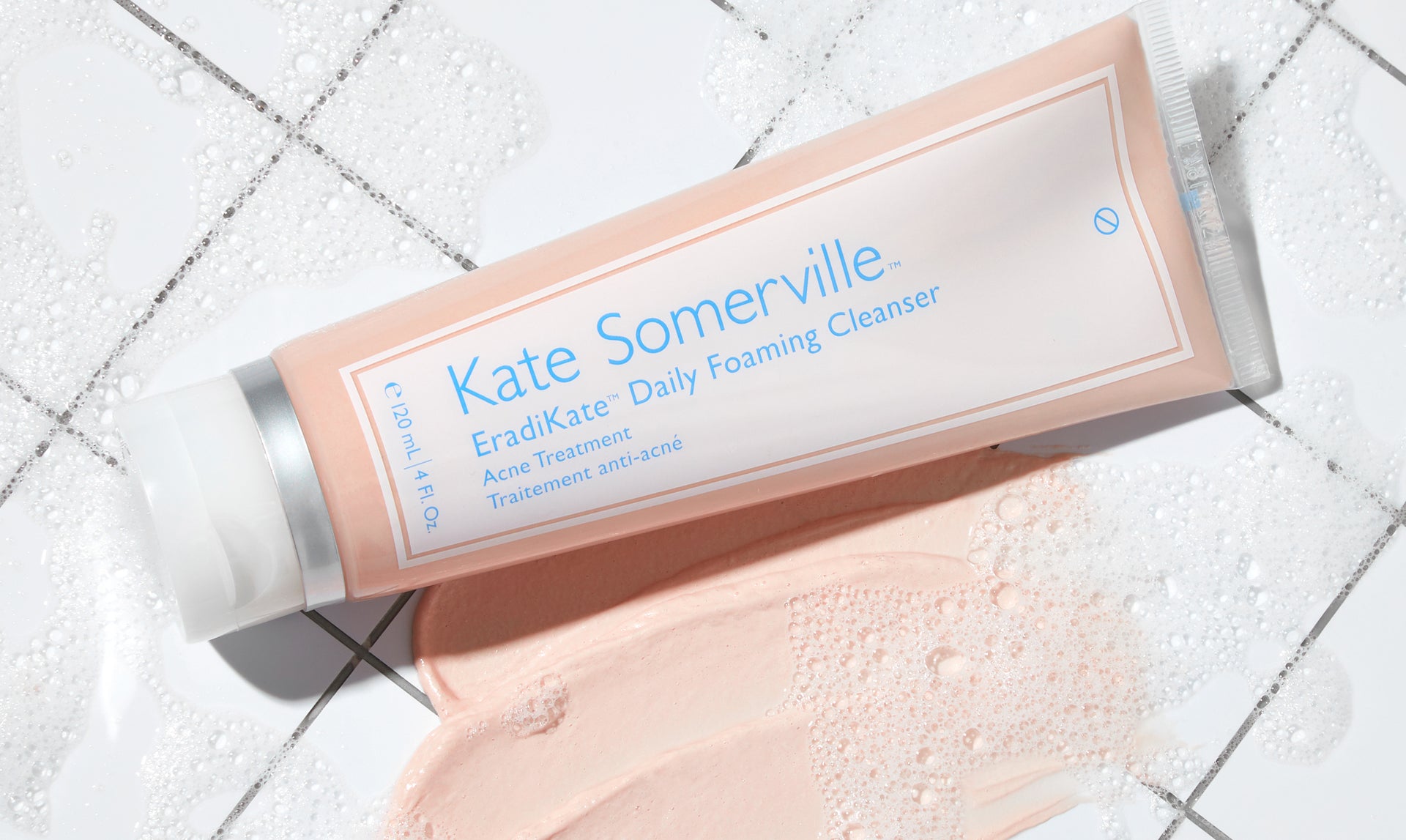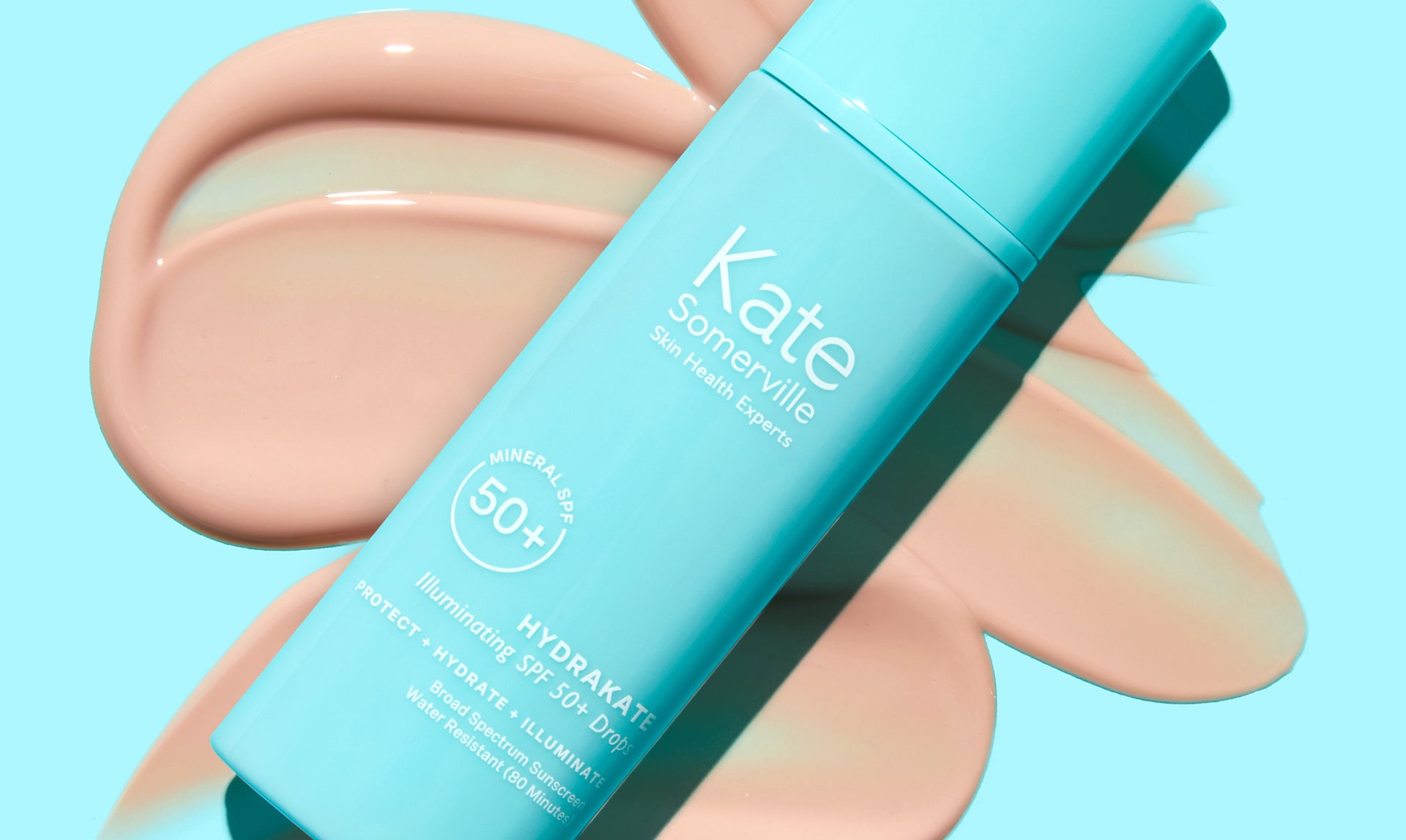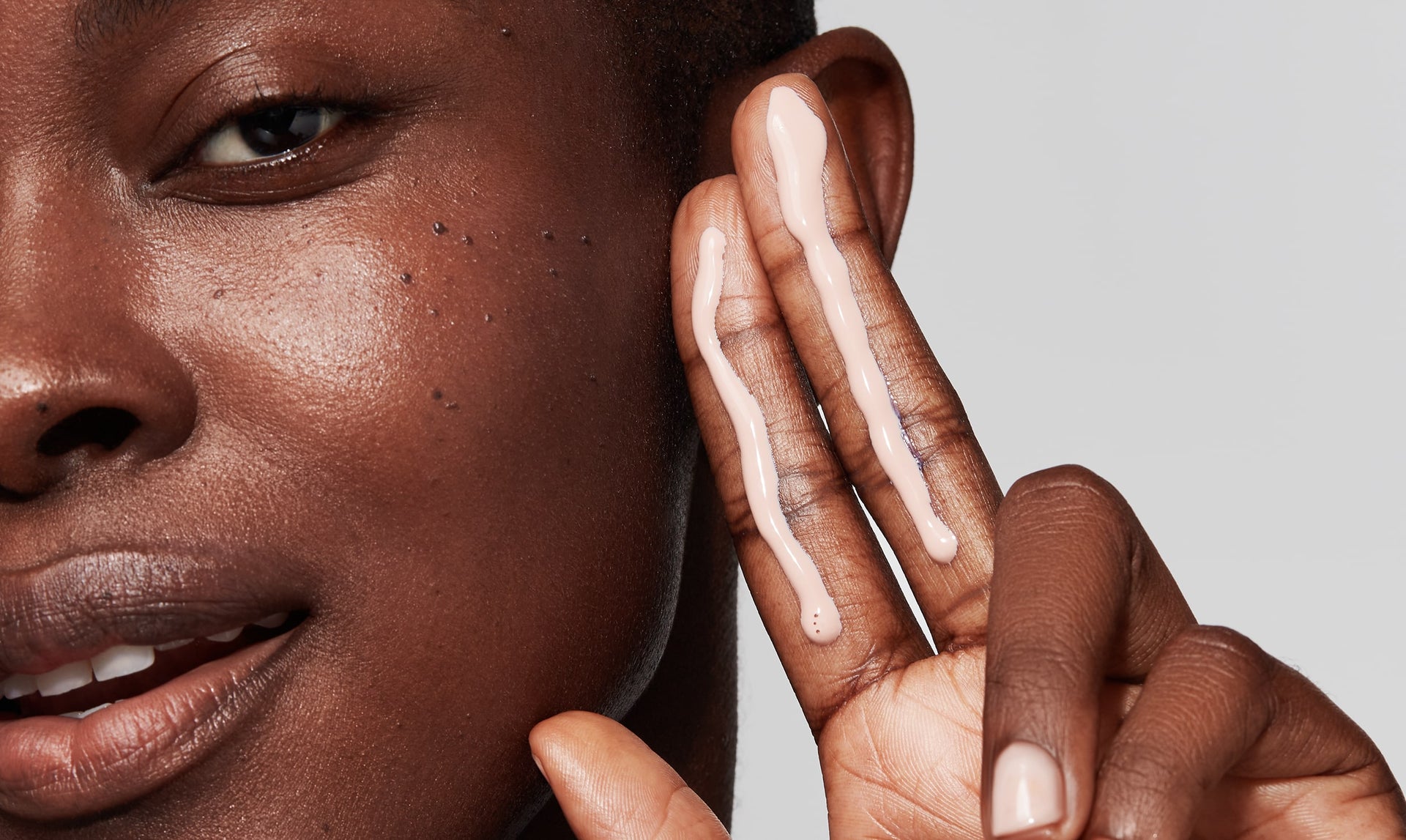Acids are used in many skincare products, from anti-acne products to toners. So which ones will work best for you and your skin’s unique needs? While there are a number of beneficial acids, two of our Kate Somerville Skin Health Experts’ favorites are salicylic acid and glycolic acid. Each plays a valuable role in skincare and knowing the important differences will help you achieve clinic-level visible results from the comfort of home.
What Is Salicylic Acid?
There are two types of hydroxy acids most commonly used in skincare: AHAs and BHAs. You can find both in various cleansers, toners, and moisturizers. However, they work very differently. Salicylic acid is a BHA (beta hydroxy acid). BHAs penetrate deep into the hair follicles of your skin and work on drying out excess oils and dead skin cells. Salicylic acid breaks down the connections between the cells to unclog pores and is often applied to combination and oily skin to minimize sun damage and control/prevent acne.1 In lower concentrations, salicylic acid may also be used to help calm sensitive skin.
What Is Glycolic Acid?
Unlike salicylic acid, glycolic acid is an AHA (alpha hydroxy acid). Made from sugar cane, it is a highly effective exfoliator which makes it an excellent option for treating various skin concerns. Glycolic acid also contains antimicrobial properties meaning that it may also help minimize acne breakouts. The unique thing about glycolic acids is that it has tiny molecules. The size of these molecules allows them to penetrate the skin easily. Once glycolic acid enters the skin cells, it stimulates collagen and loosens the bond between old, dead skin, making it easier to slough off.2 The result is fresh, glowing, and youthful-looking skin. When searching for a glycolic acid product to incorporate into your skincare regimen, we recommend starting with something like the KateCeuticals™ Resurfacing Overnight Peel. An at-home clinical-grade overnight peel, it’s expertly formulated with proven anti-aging ingredients Retinol, Glycolic Acid, Niacinamide & Vitamin E to address the comprehensive signs of aging, improving luminosity, fine lines and skin texture in just one use.
An Overview of Their Benefits
Still a little unclear about the benefits of these two acids? Use the guide below as a starting point when determining which to use.
When Should you Use Salicylic Acid?
Because Salicylic acid is a BHA, it works on the skin’s surface and inside the pores. Here are some of its most common uses.
Acne: Salicylic acid's natural anti-inflammatory and anti-acne properties make it helpful in treating blackheads and acne. This acid works to exfoliate the skin, unclog pores, and balance your skin's oil production, all of which help minimize breakouts. The Kate Somerville EradiKate™ Acne Gel Cleanser and Acne Mark Fading Gel are both formulated with Salicylic Acid to help break the persistent acne cycle while also restoring a healthy skin barrier. Our all-over Salicylic Acid Acne Treatment lotion is also an effective blemish banisher.
Oily Skin: Salicylic acids are oil-soluble, making them an excellent ingredient to use on combination and oily skin. Its lightweight nature works to balance the skin's natural oil production without clogging pores in the process. This leads to fewer blemishes, bumps, enlarged and clogged pores.
Redness: BHAs have natural soothing properties that prove to be gentle enough for sensitive skin prone to irritation, visible redness, and rosacea. Regular application of this ingredient can reduce visible redness and irritation.
When Should You Use Glycolic Acid?
An effective exfoliator, glycolic acid is the most popular AHA for a reason. You can find this in a few forms, such as glycolic acid serum, toner, or face wash. Here are its most commonly sought-after benefits.
Mild Hyperpigmentation: AHAs like glycolic acid can effectively treat mild cases of hyperpigmentation, which can help to produce a more even skin tone.
Enlarged Pores: We mentioned that glycolic acid contains some of the smallest molecule sizes of any AHA, and because of this, it can penetrate the skin with ease. By loosening the bonds of dead, aged skin cells from the surface of your skin, your complexion will appear more youthful and your pores smaller.
Fine Lines and Wrinkles: Glycolic acid contains exfoliating properties and works to hydrate the skin. Both of these properties help firm the skin, soften it, and minimize the appearance of fine lines and wrinkles.
Glycolic Acid vs. Salicylic Acid: Which Should You Use?
When deciding which of these two acids to incorporate into your skincare regimen, you'll need to consider your skin type. If you're someone with combination or oily skin who suffers from acne and inflammation, then salicylic acid is likely the best choice. Glycolic acid is an excellent option since it caters to a wider variety of skin types. Still, it's essential to speak to a skin care professional, like the Kate Somerville Skin Health Experts, about your skin's unique needs. Schedule a consultation today!
Sources:
1. https://www.ncbi.nlm.nih.gov/pmc/articles/PMC4554394/
2. https://www.ncbi.nlm.nih.gov/pmc/articles/PMC6017965/
